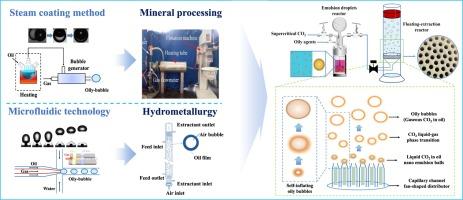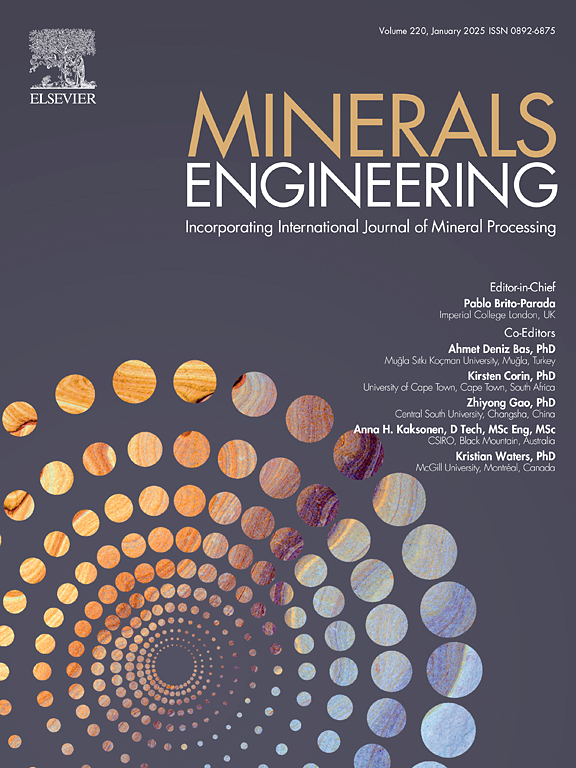Oily-bubble and its typical applications in enhancing the separation and mass transfer processes: A review and perspectives
IF 4.9
2区 工程技术
Q1 ENGINEERING, CHEMICAL
引用次数: 0
Abstract
Oily-bubbles have significant advantages including a greater contact area, stronger selectivity and higher mass transfer rate compared to bubbles, which exhibit excellent industrial prospects in mineral processing, extraction metallurgy, wastewater treatment and other fields. In recent decades, extensive research has been conducted on the enhancement of separation and mass transfer processes by oily-bubbles. Although considerable excellent results and findings have been reported, a remarkable lag is still recorded concerning the detailed explanation of their formation principle, fabrication methods and typical applications. Hence, the overarching aim of this study is to conduct a comprehensive review and provide a perspective on oily-bubbles. The generation principle and fabrication methods of oily-bubbles were comprehensively summarized based on up-to-date research progress. Subsequently, the significant role of oily-bubbles in enhancing separation and mass transfer processes, with a special emphasis on mineral and secondary resource processing, as well as in the separation and purification of metals, was thoroughly evaluated. Most importantly, the technical challenges, existing problems, and future directions of research on oily-bubbles are highlighted. In summary, this review may be helpful for improving the overall understanding of oily-bubbles and their typical applications in enhancing separation and mass transfer processes.

油性气泡及其在增强分离和传质过程中的典型应用:回顾与展望
与气泡相比,含油气泡具有接触面积大、选择性强、传质速率高等显著优点,在矿物加工、萃取冶金、废水处理等领域具有良好的工业前景。近几十年来,人们对油性气泡增强分离和传质过程进行了广泛的研究。尽管已有大量优秀的研究成果和发现,但对其形成原理、制造方法和典型应用的详细解释仍显滞后。因此,本研究的首要目的是对油性气泡进行全面回顾和透视。根据最新的研究进展,全面总结了油性气泡的生成原理和制造方法。随后,全面评估了油性气泡在加强分离和传质过程中的重要作用,特别强调了其在矿物和二次资源加工以及金属分离和提纯中的作用。最重要的是,重点介绍了油性气泡的技术挑战、现有问题和未来研究方向。总之,本综述可能有助于提高对油性气泡及其在增强分离和传质过程中的典型应用的整体认识。
本文章由计算机程序翻译,如有差异,请以英文原文为准。
求助全文
约1分钟内获得全文
求助全文
来源期刊

Minerals Engineering
工程技术-工程:化工
CiteScore
8.70
自引率
18.80%
发文量
519
审稿时长
81 days
期刊介绍:
The purpose of the journal is to provide for the rapid publication of topical papers featuring the latest developments in the allied fields of mineral processing and extractive metallurgy. Its wide ranging coverage of research and practical (operating) topics includes physical separation methods, such as comminution, flotation concentration and dewatering, chemical methods such as bio-, hydro-, and electro-metallurgy, analytical techniques, process control, simulation and instrumentation, and mineralogical aspects of processing. Environmental issues, particularly those pertaining to sustainable development, will also be strongly covered.
 求助内容:
求助内容: 应助结果提醒方式:
应助结果提醒方式:


